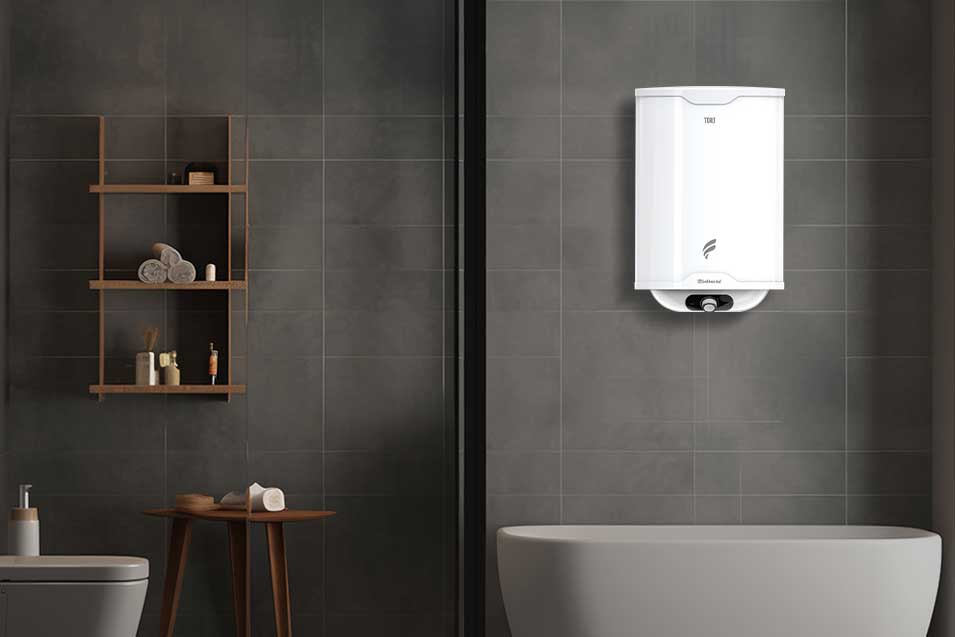
Common Geyser Problems and How to Fix Them?
08th August 2025 | Written By: Rika Aash | Read Time: 3min | Last Updated: 08th August 2025
Whether it’s summer, winter, or rain, geysers (Water Heaters) are an indispensable part of our households. The relief provided by a hot bath or shower, early in the morning or after a tiring day, is both rejuvenating and refreshing. However, with continuous use, this appliance becomes susceptible to some common issues that may arise. In this blog, let us learn about some common geyser problems and how to troubleshoot them. Kindly note that any electrical checks or adjustments should be always carried out by a qualified electrician or technician to ensure safety.
-
Geyser is not heating water
This is one of the most common problems encountered while using geysers. If your heater is not dispensing hot water, the possible cause could be an issue with the power supply, low voltage, thermostat, or heating element.
How to troubleshoot
- Check if the geyser is plugged into the socket properly and whether the power indicator is on. If you notice a loose plug, then plug it properly.
- Check if the MCB has tripped and shut down the electrical supply completely. If yes, turn on the MCB that has tripped.
- Check if the thermostat is set according to the weather conditions — low for summer, medium for spring & high for monsoon. If not, adjust it to the desired temperature for hot water.
- If the thermostat is fine, then the issue could be with the heating element.
-
Water is not heating up enough or overheating
If you notice that the water is not as hot as you expect it to be or it is too hot, then a thermostat malfunction could be one of the reasons. Another reason for water not heating up enough could be sediment build-up on the heating element.
How to troubleshoot
- Reset the thermostat settings to the desired temperature with the help of technician to get hot water.
- Replace the thermostat if it is faulty.
- Clean the heating element with a white vinegar solution after draining the tank, with the help of a technician.
-
Water is leaking from the geyser
The most common causes of leaks are loose pipe connections, corrosion, and faulty valves.
How to troubleshoot
- Begin by checking the inlet/outlet pipes and tighten them with a wrench.
- If the leakage continues, consider replacing the pipes or faulty valves with the help of a technician.
- If rust or corrosion is the reason for the leakage, then consider servicing your geyser or replacing it.
-
Geyser is making unusual noises
Old geysers make unusual noises like rumbling, humming, or popping due to sediment build-up in the tank or trapped air inside the pipes.
How to troubleshoot
- Begin by draining the tank to clear mineral build-up with the help of a technician.
- Run hot water through the pipes with one end kept open to release the trapped air, with the help of a technician.
-
Dirty/Discoloured or smelly water from the geyser
This could be due to bacteria or rust inside the tank.
How to troubleshoot
- The easiest way to get rid of this problem is by flushing out the stagnant water from the tank and disinfecting it with a hydrogen peroxide solution.
- You should also consider replacing the worn-out magnesium anode rod to prevent corrosion.
- If rust or discolouration persists, consider installing a water softener or filtration system to improve the quality of water.
-
Geyser keeps turning off unexpectedly
This might happen due to electrical or mechanical problems. Issues like overheating due to faulty thermostat, electrical wiring issues, or a worn-out heating element can lead to geysers turning off during use.
How to troubleshoot
- Use the reset button (if available) to reset the thermostat.
- Check for any damaged or loose wiring.
- Replace heating elements or the thermostat with the help of a technician.
-
Burning smell from the geyser
Sometimes you might encounter a burning smell while using your geyser. This could be a sign of overheating wires, PCB, or a failed heating element
How to troubleshoot
- If there is a burning smell, the first thing to do is turn off the power of the geyser and move away from it.
- Call a technician or electrician to find out the exact cause of burning smell.
Conclusion
Having an understanding of common geyser problems helps in addressing the issues quickly and maintaining the geyser better. By knowing how to deal with these problems, you can extend the life of your geyser and avoid unnecessary repair costs.

Frequently Asked Questions (FAQs) :
- Q1. Is it safe to use a geyser with low water pressure? No, it is not recommended to use a geyser with low water pressure, as it reduces heating efficiency and may damage the geyser over time. It is recommended to adhere to the minimum pressure requirements mentioned on the geyser before installation.
- Q2. How often should a geyser be serviced to avoid problems? It is recommended to service the geyser once a year to ensure efficient performance and extend its lifespan.
- Q3. Why does my geyser take too long to heat water? A geyser may take too long to heat water due to sediment build-up in the tank, a faulty heating element, or a low power supply. Regular maintenance can help improve its performance.
- Q4. How do I know if my geyser thermostat is faulty? If your geyser isn’t heating water properly, overheats, or runs continuously without shutting off, it could be a sign of a faulty thermostat. You may also notice unusually high electricity bills or inconsistent water temperatures.




